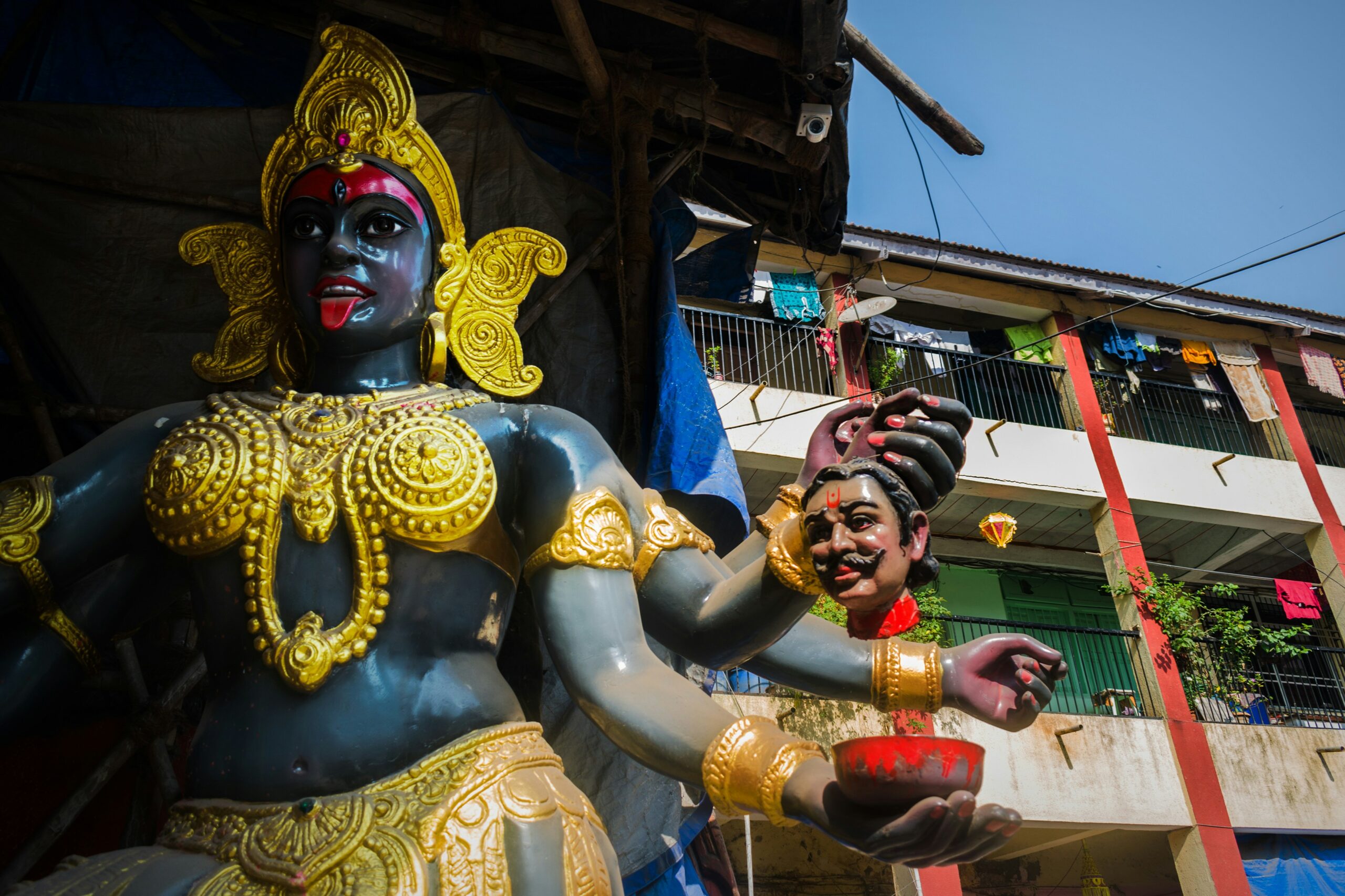Will Thomas & Nick Kistler
If you want to understand the mysticism of many Asian and Indian gurus, you have to understand the Tibetan phrase, “yeshé cholwa”, commonly translated as crazy wisdom, but more accurately rendered as, “wisdom unbound”. The concept is essentially that there is a certain type of wisdom that provides illumination beyond what we might consider cultural common sense. This can only arise when the individual is unbound, untethered, and unencumbered from any conditions that might stifle their expression. These conditions are generally considered to be monastic, cultural and societal norms, but they can really be anything that dictates what ‘spiritual’ life is or should be.
Indeed, the phrase points us to a reality that becoming free of cultural conditioning, and living unbound from convention, culture, and common sense can be illuminating in ways that traditional spirituality or dogma cannot. The closest relatable example from western traditions may be when Yeshua flips the money lenders tables inside the temple. But this act is relatively mild when compared to the yeshé cholwa of some of the Indian and Tibetan stories.
For example, the tale of the Indian saint Naropa’s surrender to God, encapsulated in the moment when he removed maggots from the form of the dying dog with his tongue in a supreme demonstration of his compassion.
A less visceral example is the legend of the Buddhist spiritual master Marpa and his assignment of the construction of a stone tower to his student Milerapa. The story goes like this; seeking to absolve himself of his sins, the former black magician Milerapa approaches Marpa and asks to be taken as a student. Marpa initially refuses, but eventually relents and instructs Milerapa to construct a stone tower several stories high. Upon completion of the task, he promises to absolve the student of his sins and teach him the way of goodness and compassion.
Milerapa sets about the task, but each time he nears the completion of a tower, Marpa quickly changes the requirements and forces Milerapa to start anew. This leads to a wildly frustrated Milerapa, but nonetheless he sticks with it, weary and wounded as he is. Over the course of his tower building, he constructs and subsequently deconstructs 4 towers, eventually settling on a 5th and final one. (Though Marpa makes him build this one, deconstruct it and rebuild it, mostly just to see if he would.)
Eventually, his perseverance is enough to prove both to himself, and to his teacher, that he is sincere in his desire to change himself and learn the teachings of the Buddha. A fact he would not have come to if he had simply been given the teachings without the upfront effort. It is indicated in the story as well that he wouldn’t have valued the teachings without the exertion of literal back breaking effort.
It’s important to note that the techniques of teaching that accompany this concept of unbound wisdom only really arise outside of the context of institutionalized religion (the exception being, perhaps, some schools of Japanese Zen Buddhism). The techniques are often too strange, too energetic, and in some sense too personal to the student and teacher for it to become a dogmatic path of initiation for the masses. Can you imagine a Catholic priest demanding that you construct and deconstruct several stone towers, berating you all the while, only to make you demonstrate to yourself how much you wanted to accept Christ into your heart? Of course not. It is only an environment outside the context of a church or monastery, an environment without rules and regulations other than the Siddha’s own, which allowed these wisdom teachers to remove themselves from the hierarchy of religion.
It is only once the hierarchy of dogma and institution is sidestepped that these teachers (and their students) can enter into their liberated state, not as teachers, monastics, or other cultural roles, but as humans.
This is, somewhat paradoxically, demonstrated when these siddhas like Marpa, sometimes after decades of retreat(1), and after completely abandoning their cultural roles, return to the relative normalcy of society. It is, in fact, extremely common for these forest gurus to eventually take on families and begin work ordinary jobs; returning to society and performing cultural roles, but no longer identifying with them.
The Tibetan teacher Trungpa Rinpoche commented that this quality of normalcy may be the defining quality of the siddha, because worldly endeavors “maintain their connection to Earth”. By releasing themselves from the binds of dogma and institutional expectations, they claim their inherent human freedom and, in doing so, realign with the “proper order of things”. Only then can they play their cultural role without solely identifying with it.
Perhaps the most telling about the tradition of the siddhas is that these half magical, half mundane individuals; these men and women who represent a profound and embodied arm of the perennial body of human spirituality are not mystical kings or queens commanding regiments; nor are they gods with legions of angels at their disposal. Instead, they are ordinary human beings who have become so naturally themselves, so free from the conditions of attachment, aversion, and ignorance, that they stand outside the cultural milieu, and yet exist within it.
This, we have a little more context for in the Christian tradition. When Yeshua speaks in John 15:19, “I chose you out of the world, therefore the world hates you.” And again, in John 17:17-17, “As you sent me into the word, so I have sent them into the world.”
Normally, this is understood in the phrase that we should be, “in the world (culture, institutions, etc) but not of it.” Unbound from culture, dogma, and hierarchy, yet still living among the masses.
This is potentially the most important aspect of the siddha. The abandonment of cultural conditioning to establish a resonance with the natural order of things and then returning to the culture, renewed, and invigorated by this newfound wisdom. This act of temporarily abandoning a culture that binds them to dogma and tradition, facilitates a re-identification of the individual with his or her natural dignity and humanness. This in turn allows an integration with a larger scale of self that goes far beyond social roles and cultural hierarchy. It is only when this bigger self is discovered, this aspect of the self that is “not of the world.” That the sage can return to the world and remain unencumbered by their social roles.
Of some note is that this sort of cultural abandonment is quite prevalent amongst other forms of religion, not just Asian and Indian, but many others as well. From the Taoist mystics to the Sufi sages, from Siberian shamans to first nations methods of initiation, stories of “crazy wisdom” abound. This abandonment of culture is, somewhat paradoxically, a cross-cultural phenomenon. But though it is common, it is equally disruptive everywhere it arises.
This said, we cannot consider the ideal, the human archetype, of siddha or maha siddha, of the unfettered sage, without considering its chaotic nature, a nature that is made manifest when one really seeks, “wisdom unbound”. In the context of modern times, this combination of deep knowledge with an unbridled natural spirituality elicits thoughts not only of major modern spiritual leaders like Chogyam Trungpa but to transcendentalist figures like the environmentalist Edward Abbey, the English occultist Aleister Crowley, the psychedelic rebel Timothy Leary, and the American transcendentalist John Muir. All, in their time, reviled as, at the very least provocateurs, if not outright dangerous.
Abbey, for his part, wrote a fantastic essay titled “River Solitaire” which we feel encapsulates the deviation from the status quo that so emphatically characterizes the sages of old. In this essay he describes a journey he took when, during a US presidential election, he was called to remove himself from the oppressive cacophony of society’s many voices arguing amongst themselves. Abandoning the stifling “importance” of electoral politics, he instead placed himself alone in a canoe on the Colorado River as winter was just beginning to nibble at the canyons of central Utah (5).
Years previous, he wrote one of his quintessential works, the book “Desert Solitaire” while living as the lone park ranger in the newly christened Arches National Park. He would bring profound, even prophetic, lessons from his time spent alone in nature back onto the social and political stage. Writing, at the same time, like a Trappist monk inspired by the beauty and sacredness of the natural world, and a crazed anarchist hellbent on dismantling the systems that were disregarding that beauty in favor of profit; the systems that were desecrating the altar of nature’s wildness, on which all sentient beings are called to realize themselves. Abbey, like many who have crazy wisdom coursing through their veins, was not particularly well liked. He made natural enemies in corporations and politicians, but he was also largely rejected by the environmentalist communities as well. They did not agree with his unorthodox methods and devil may care attitude.
But this outright rejection of the sage, the siddha, the prophet; this very attitude seems a trademark of the times we find ourselves living in. Perhaps it is a trademark of all times. We, as cultured entities, are so involved, so entirely caught up in maintaining the continuity of our individual and collective narratives that we run screaming from anyone who forces us to question the pretext that forms the foundation of our almost utterly debauched lives. We come back to these individuals, not with questions and curiosity but with torches and pitchforks, hellbent on maintaining the psuedo-comfort that is the antithesis of crazy wisdom. We would seemingly prefer to suffocate in our nests of cultural toxicity, safe in the knowledge that if we are to be killed, it will be of our own doing. This is seeming preferable than taking dangerous flight in pursuit of any sort of possible salvation.
It would be apt to describe the modern siddha’s role is that of the new-monastic prophet, the lived embodiment of the first drowsy breath we take when we awake from the sleep we have been fighting for centuries, if not millennia, to maintain. It is not in the grand array of provocation, or the condemnation of the modern moderate, but in the lived representation of a favorable alternative to the status quo that gives these individuals their profound and lasting power over the dialogue between civilization and the passage of time. It is my belief that if we intentionally allow space in this dialogue for crazy wisdom then it can become a crucible and not a prison. The dialectic that is formed by the mutualistic relationship between society and the ever-present spirit of evolution (both individual and collective), can become the container in which the grand operation, the grand experiment of humanity learning from humanity can take place. It is in this dialogue that the crazy wisdom of figures like Trungpa and Abbey takes on the role of catalyst; speeding up this evolution and negating the habitual entropy that is the pretext of a materialist society. If we can hold our tongues and listen, bite our tongues and wait for the moment when the world answers us in our own prophecy, then we can begin to truly recognize the value of the siddha’s role in the human experiment.
It is my hope that one day we can become our own sages, our own catalysts, and set about building a world on our own terms, free of the bondage of a culture of toxicity and dogma. In the meantime, it would do us well to examine the virtue that may be present in one another’s ‘insanity’ . It is my contention that, should we summon the courage to look, we will be pleasantly surprised by what we find there.
Citations
Reginald Ray, “Chogyam Trungpa as a Siddha,” Midal, ed., Recalling Chogyam Trungpa, pp. 197-220.
Trungpa, Chogyam. Born in Tibet. Shambhala, 2000.
Johari, Harish. Tools for Tantra. Inner Traditions Bear and Comp, 1987.
Kripal, Jeffrey J. “Charisma and the Social Dimensions of Religion .” Comparing Religions: Coming to Terms, Wiley Blackwell, Malden, MA, 2014.
Abbey, Edward. One Life at a Time, Please. Holt, 1988.




